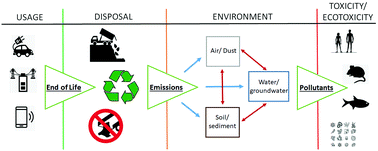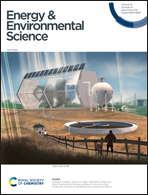Environmental impacts, pollution sources and pathways of spent lithium-ion batteries
Abstract
There is a growing demand for lithium-ion batteries (LIBs) for electric transportation and to support the application of renewable energies by auxiliary energy storage systems. This surge in demand requires a concomitant increase in production and, down the line, leads to large numbers of spent LIBs. The ever-increasing battery waste needs to be managed accordingly. Currently, there are no universal or unified standards for waste disposal of LIBs around the globe. Each country uses one or a combination of practices such as landfilling, incineration and full or partial recycling depending on the number of batteries leaving the market, current legislation and infrastructures. Informal disposal or reprocessing is not a rare activity. This review records, identifies and categorises the environmental impacts, sources and pollution pathways of spent LIBs. The drawbacks of the disposal practices are highlighted and the threats associated with them are discussed. The evidence presented here is taken from real-life incidents and it shows that improper or careless processing and disposal of spent batteries leads to contamination of the soil, water and air. The toxicity of the battery material is a direct threat to organisms on various trophic levels as well as direct threats to human health. Identified pollution pathways are via leaching, disintegration and degradation of the batteries, however violent incidents such as fires and explosions are also significant. Finally, the paper discusses some of the main knowledge gaps for future assessments. The current study offers a comprehensive overview of the threats and hazards that need to be managed in order to ensure the design and implementation of safe disposal and processing options for spent LIBs.



 Please wait while we load your content...
Please wait while we load your content...